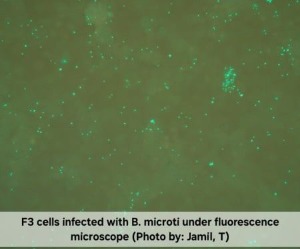Exploring in vivo and in vitro infection models in brucellosis research: A mini-review
Authors: Tariq Jamil, Sana Iqbal and Vassilios Sandalakis
Ger. J. Vet. Res
2024.
vol. 4, Iss. 1
pp:32-38
Doi: https://doi.org/10.51585/gjvr.2024.1.0072

Abstract:
Brucellosis is a serious disease that affects both animals and humans. It is caused by consuming unpasteurized dairy products that are contaminated with the Brucella bacteria. To study the pathobiology of this disease and develop preventive strategies, researchers rely on in vivo and in vitro models. A systematic literature search was conducted in January 2024, which revealed 38 studies that used these models in the previous four years. Mice were the most commonly used model for studying the disease's virulence genes, immune responses, vaccination, and treatment testing. Out of the 38 articles discussing infection models in brucellae, 6 used only in vivo models, 9 used only in vitro models, and 24 used both models. In addition, there were 32 studies with in vitro experiments, most of which utilized macrophages to study intracellular survival mechanisms and host-pathogen interactions. The studies mainly focused on B. abortus, as it had a significant impact on public and livestock health. Both in vivo and in vitro models were used to understand comprehensive intracellular mechanisms, immune responses, and treatment evaluations. However, there were several challenges in using these models, such as ethical concerns and host pathogen-specific immune responses. While both models provided important insights, the final selection choice of the model mostly depended on the research objectives, pathogen type, and availability of resources. Nevertheless, validation and understanding of these models are important to predict responses in the natural hosts
Keywords:
Brucella, in vivo, in vitro, Host-pathogen interactions, Infection mode
Statistics:
Article Views: 1696
PDF Download: 56